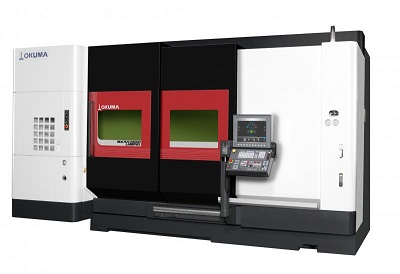
In recent years, advances in the additive technology allowed to move far beyond rapid prototyping. With laser metal deposition (LMD), partial repairs, coating and hardening, additive manufacturing is proving a valuable asset throughout the entire supply chain. At the same time, conventional manufacturing processes such as turning, cutting, milling and grinding remain essential for finishing high-quality components.
Manufacturers from many industries are striving for new technologies – from cutting-edge materials to state-of-the-art manufacturing processes. Chief among them is additive manufacturing. Enabling the creation of parts with complex geometries and shapes that would often be impossible to manufacture without generative processes, the technology is particularly suited for smaller volumes. It is also a powerful solution when it comes to customising parts to meet individual demands, as even slightly altered versions of pre-existing products can be produced cost-effectively.
Laser Metal Deposition
One of the most powerful additive manufacturing methods is laser metal deposition. This process creates solid components from a CAD-model by depositing layers of one or several materials on top of one another to create the desired shape. For this, the laser generates a weld pool on the component surface. A metal powder is then added through a nozzle, creating beads that are welded together. In this way, layer after layer can be built up on either an existing body or to create entirely new structures. In addition, LMD lowers material costs since there is considerably less waste compared to traditional manufacturing techniques.
Super Multitasking
Okuma has increased its R&D-efforts in recent years to extend the capabilities of its multitasking machines. The manufacturer’s LASER EX series is capable of traditional machining operations like milling, turning and grinding, handling even tough materials like titanium and Inconel with ease. Equipped with a powerful laser from industry leader TRUMPF, the machines also enable high-quality LMD, allowing up to four different metallic powders to be used in a single operation. The machines are able to automatically switch powders mid-operation. Changing the nozzle is not necessary. This greatly increases efficiency in machining parts made from multiple materials. Compared to cutting or milling, LMD allows for much higher workpiece complexity. Even intricate parts like turbine blades with integrated cooling channels can be built via LMD.
Easy sectional repairs
One of the greatest benefits of additive manufacturing to manufacturers is the fact that wear and tear of components no longer requires a complete exchange. Instead of manufacturing spare parts from scratch and waiting for their delivery, LMD provides a cost-effective solution by enabling easy spot repairs. For this, the metal powder is directly fed onto the damaged portion of the part and then laser welded to restore the component to its original strength. After completing these repairs, Okuma’s LASER EX machines also enable finish milling to achieve the desired surface quality.
Laser hardening in one setup
To meet the demands of the aerospace industry, die and mold manufactures and many other industries that focus on low-volume production, Okuma’s LASER EX series enables start-to-finish manufacturing and efficient repairs of parts on one single machine. The laser can even be used for laser hardening the surfaces of carbon steel workpieces. This process is a significantly more productive alternative to conventional heat treatment and reduces thermal deformations to a minimum. Excellent workpiece accuracy is the result.














